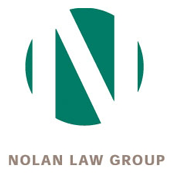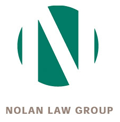The Obama Administration has hailed the importance of competence. True to the ethic, Member Deborah Hersman has been nominated by the White House to serve as the next chairman of the National Transportation Safety Board (NTSB). In an Administration where cronyism and lackluster, if not incestuous appointments prevail, elevating Hersman to head of the NTSB would really affirm smarts, independent leadership, and savvy.
Not since James Hall served as chairman in the 1990s has the NTSB had politically astute, insightful and responsible leadership. The interregnum has been characterized by the appointment of political opportunists and apologists for the Federal Aviation Administration (FAA).
As chairman, Hersman can take the NTSB to the next level established by Hall, restoring the NTSB as pre-eminent among the world’s accident investigation bodies (it could be argued that the NTSB currently lags noticeably behind the UK’s Air Accidents Investigation Branch and Canada’s Transportation Safety Board, which have consistently done excellent work).
NTSB Member Deborah Hersman, the prospective chairman. A Senate endorsement of her appointment will mark a vote for competence in government.
Hersman has served as one of the Presidentially-appointed members of the NTSB since 2004. I was present at her very first hearing into an aviation accident, the 2001 crash in New York City of the American Airlines A300 that killed 265 people. To the assembled relatives of the victims, to many of whom English was a second language, Hersman offered expressions of sympathy on behalf of the board in Spanish. This gesture, on the very first day’s hearing, was but a preamble for incisive questioning that followed. Consider this line of inquiry – concerning the difference between certification standards and the real world – posed to NTSB professional staff member David Ivey on the issue of rudder pedal sensitivity (a salient part of the accident inquiry and the dead first officer’s control inputs for the rudder):
Hersman: If you are a line pilot, how likely would it be that you would get the full amount [of rudder]? Or get 1.2 inches of the pedal at 250 [knots airspeed]?
Ivey (a former airline pilot): If I were to put in rudder? And knowing what I had found that … there was a very good chance you could put in full rudder [with 1.2 inches of travel]?
Hersman: And if you put in full rudder to the right, how likely is it that you’re going to have to come back with the left rudder?
Ivey: I think I could speak for most pilots that if I had any input that had sent me to the right, for example, I’m not going to do what certification says and put my rudder to neutral. I am going to counter the effects that I have just experienced in my body or what I have seen and I’m going to put in opposite rudder to try to correct the problem …But to answer your question, if I had a big yaw to the right I would put in left rudder. I certainly wouldn’t put it in neutral.
Hersman: And once that happened, is it your belief that this pilot was in APC? [Aircraft pilot coupling]
Ivey: It is my belief.
In this brief exchange, Hersman – not a pilot herself – was able to establish that rudder pedals that move only 1.2 inches can be too sensitive, forcing a correction with opposite rudder, but that certification standards do not account for this reversal. Rather, they require that the rudder first move to the neutral position, which greatly reduces the aerodynamic forces on the tailfin.
In the American Airlines crash at New York, the first officer tried to restore control of the airplane by whapping the rudder fully right and then full left. The tailfin broke off under the stress and the aircraft plummeted into a neighborhood.
In more than 15 major transportation accidents, Hersman has engaged in similarly trenchant questioning that has led to new insights, better investigations, and much improved recommendations.
The only member of the NTSB to come close to her depth of knowledge has been Robert Sumwalt, who brought to the position years of airline flying and work on the safety committee of the Air Line Pilots Association (ALPA). Between Hersman and Sumwalt, little if anything will fall between the investigative cracks, as it were.
Among many sterling attributes, Hersman has demonstrated five that will make her an outstanding chairman:
1. Diligent attention to the documentary record amassed during the course of any investigation. The inconsistencies, gaps and contradictions in the record have informed her line of inquiry during public hearings. Moreover, Hersman is able to relate the findings in one investigation to others that the NTSB has conducted. In brief, she has set the standard by doing her homework.
2. She is courteous to the NTSB professional staff but also quite adept at challenging their position when she deems it lacking. Board members do not serve to merely rubber stamp positions and recommendations developed by the staff, and Hersman has been clear when she felt the staff did not go far enough (or, conversely, went further than the evidence would support). Rather than a glorified lap dog, Hersman has demonstrated a refreshing independence of mind.
3. She is persistent. I cannot recall the number of times she has said, or words to this effect, “If we do not press the FAA, we’re going to be dealing with [insert subject] again, in some future accident.”
4. She is prepared to address uncomfortable realities. As an example, she delivered an address 22 April to the Corporate Aviation Safety Seminar in Orlando, FL. Hersman discussed the fatal crash in July 2007 of a NASCAR Cessna 310R at Sanford, FL, the result of an electrical fire. Hersman was blunt about the probable cause:
• Actions and decisions by NASCARs corporate aviation division’s management and maintenance personnel to allow the accident airplane to be released for flight with a known and unresolved discrepancy.
• The accident pilots’ decision to operate the airplane with that known discrepancy, a discrepancy that likely resulted in an in-flight fire.
Note the absence of maintenance action. Hersman presented this illustration at the 2009 Corporate Aviation Seminar.
Hersman laid out the bill of particular deficiencies in the belly of the corporate beast, as it were.
5. She understands that lives are at stake, and these lives are no abstraction. Whether its electrical wiring, structural integrity, flight control design, or what have you, she recognizes that a failure of safety defenses puts lives at hazard. Dry statistical analyses have flesh and blood consequences.
Hersman came to the NTSB from the Senate Commerce, Science & Transportation Committee, where she was a staff member responsible for legislative and policy initiatives.
The Senate can be proud that one of its staffers has made a significant contribution as Member of the NTSB. The senators can turn pride to votes for her confirmation as chairman – to the great benefit of the travelling public.

